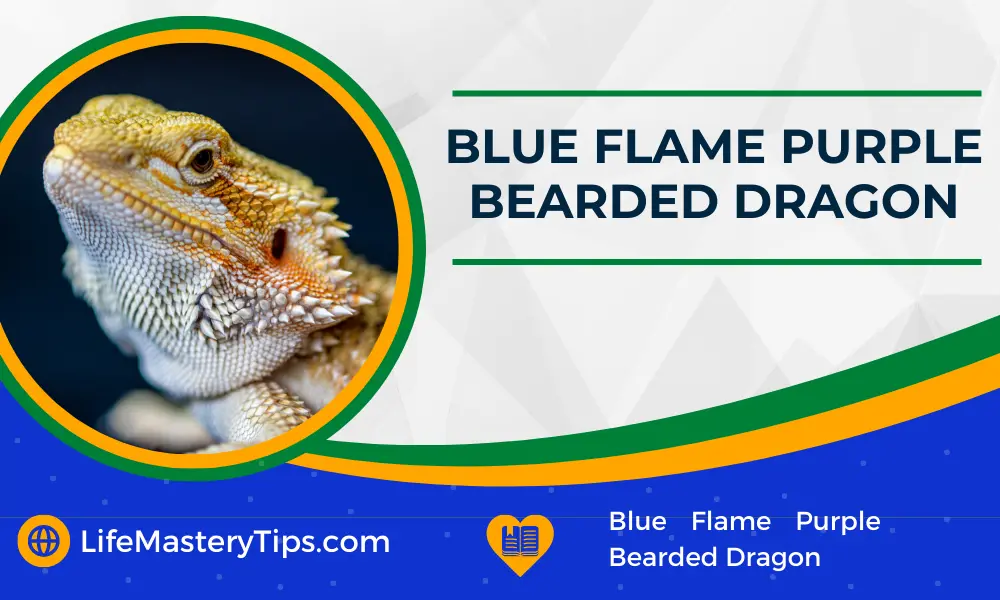Bearded Dragon Color Change: Bearded dragons are some of the most popular pet lizards in the world. They’re easy to care for and have a lot of personalities, which is why they make great pets for kids and adults alike. Bearded dragons come in many different colors, but there are some varieties that stand out from the rest because their color patterns are so unique.
Another Interesting Read: Witblits Bearded Dragon Playpen
Bearded Dragon Color
Bearded Dragons are a species of lizard that is native to the desert regions of Australia. They are omnivorous, meaning that they eat both plants and animals. Bearded Dragons are popular pets and can be found in many pet stores. Bearded dragons come in various natural colors, including shades of brown, tan, yellow, orange, and even red. These colors can be influenced by their genetic makeup, age, and geographic origin. It’s essential to recognize the typical colors of your specific dragon to monitor any significant changes.
The temperature and lighting conditions in the dragon’s habitat can affect its color. When bearded dragons are cold, they might appear darker or duller in color, while warmer temperatures can enhance their vibrancy. Providing an appropriate temperature gradient and UVB lighting is crucial for maintaining their health and natural colors.
Bearded dragons can change color in response to stress, fear, or excitement. When they feel threatened or anxious, they may darken their colors to blend in with their surroundings or display black patches on their body. Conversely, a happy and relaxed dragon might appear lighter and more vibrant.
Normal Bearded Dragon Color
Although the normal color of a bearded dragon is brown, you may notice that your lizard’s color changes over time. The change in color can be affected by diet, temperature, and other factors.
Bearded dragons are native to Australia but there are several subspecies. Their colors vary from region to region and even from habitat to habitat!
Bearded Dragon Colors in Captivity
In order to breed bearded dragons, you need to have a male and a female. The females are generally larger than the males, so it’s easier to tell which is which. Once you have your pair of bearded dragons, they will need some time together in order to mate. If they do not get along after being introduced, they should be separated until they are older (at least 2 years).
Babies can start becoming fertile around 9 months old – but may take up to 2 years before they start laying eggs! After laying their first egg (between April and June), expect that this will be followed by another 5-10 eggs every month or so until she starts slowing down her rate of production at around 2 years old.
Here are some things that can help determine whether your bearded dragon is healthy:
If she has very little appetite or if she won’t eat anything at all for more than two days in a row then something might be wrong with her health and her diet needs to change accordingly.
Hypo Bearded Dragons
Let’s start with the basics: what is a hypo? Hypo-bearded dragon is a recessive gene that gives your beardie a light color. It’s actually called “hypomelanistic,” which means they’ve got less melanin—a pigment that helps protect their skin from UV rays and regulate body temperature.
This recessive gene (or breed) is more common in captivity because it makes for prettier-looking dragons, but don’t worry—you can still get them at pet stores or even online! Just make sure you know what you’re looking for if you’re going out of your way to find one.
So now that you know what hypo means, let’s take a closer look at what else will be different about these guys compared to other bearded dragons.
German Giants
German Giants are a popular bearded dragon morph with a bold, yellow coloration that makes them easy to distinguish from other morphs. If you’re looking for a bearded dragon with a bold, distinctive look that doesn’t involve mixing up your own colors, German Giants may be the best choice for you. They aren’t as common as standard or even snow-white bearded dragons, but they make up for it with their unique appearance and relatively large size.
If you’re new to keeping reptiles and want something that’s easy to handle and beautiful to look at—but still looks like an exotic animal—then this one might be perfect!
Translucent Bearded Dragons
Translucent bearded dragons are a beautiful, pastel yellowish color with a lighter-colored belly. They’re not too common but they’re still very popular with bearded dragon owners. They’re not as common as their normal counterparts because they cost more to get and feed. However, if you can afford them and want an amazing-looking pet that you’ll cherish forever, then go ahead! You’ll love your new translucent bearded dragon!
Citrus Tigers
The Citrus Tiger is a hybrid of the Snow and the Desert Bearded Dragon. Its name comes from its coloration, which includes orange and yellow stripes on a white base coat. The Citrus Tiger has been bred by cross-breeding these two subspecies, so they aren’t technically a true species.
Because they are so new to the market, there isn’t much research done on this type of bearded dragon yet. However, there are plenty of owners who keep them as pets and have shared their experiences with us here at [Company Name]. Here’s what we’ve learned about this popular species:
How to tell if your bearded dragon is a Citrus Tiger: If you think your pet may be one of these colorful reptiles then look for any combination of white or light gray scales that are covered in dark orange stripes or spots along its backside (the part closest to its head). The rest of its body should also have bright reds or yellows as well as lighter shades like pinkish-white tones near its belly area (the part closest to its tail).
Breeding Citrus Tigers: Because they’re still pretty new to breeders no one knows exactly how long it takes before these guys start laying eggs but some owners say it can take up to two years before they start reproducing themselves!
Bearded Dragon Morphs
A morph is a different color variation of the same species, and bearded dragons have several. The most common is the standard color morphs—usually orange, black, white, and brown—but more recently people have begun breeding other colors such as blue and yellow.
Morphing is created by selective breeding, where you select animals that have traits that you like in order to produce offspring with those traits. For example, if you have an animal with good eyesight but he or she has a red body color instead of blue then your goal would be to breed only those animals with good eyesight who also happen to be blue in color. This takes many years because it takes time for genes (coding for certain characteristics) to combine correctly in each parent’s offspring so that they can recombine themselves into new combinations and bring out new traits which will eventually become dominant traits within future generations
Yellow-Bearded Dragon Morphs
There are many color morphs of bearded dragons, but the most common and well-known is yellow. Bearded dragons with this coloration have a base color of bright orange to golden yellow that is accented by black spots on their skin. Like other morphs, this recessive gene can be bred into almost any type of bearded dragon.
It’s important to note that while it’s possible for two different colored bearded dragons to produce offspring with that same combination of colors, it isn’t always the case. The dominant genes will generally take precedence over the recessive ones. So if you breed a red-orange dragon with another red-orange dragon, their offspring will likely appear redder than orange (and possibly even more so than either parent).
Witblits
Witblits is a rare morph of bearded dragon that was bred by crossing two other morphs together. They are a combination of yellow and orange, giving them their name (which means “white lightning” in Dutch).
Leatherback Bearded Dragon
Leatherback bearded dragons are one of the most expensive breeds of bearded dragons, but it’s easy to see why. Leatherbacks are known for their dark black and white coloring, with a touch of tan on their snout that gives them their name. They’re not a true morph, but rather a combination of genetics and breeding techniques that help create the appearance you see today.
Bearded dragons come in many different colors, patterns, and variations—and there are even some rarer ones out there!
Citrus bearded dragon
Citrus bearded dragons are yellow in color, with a body and tail that are yellow and a belly that is greenish. They also have a defined line between the two colors of their body. This color is related to their diet as they are able to produce more carotenoids when they eat more vegetables than proteins.
Green bearded dragon
Green dragons are green with yellow bellies, and they are the most common of all bearded dragons. They are not albino, nor are they a morph or hybrid. But why do they look different than other types of bearded dragons?
They don’t have both red and yellow pigments in their skin, so it’s not just their color that makes them unique. They also have more spots on their body than other species of bearded dragons do—and these patterns aren’t symmetrical like those found on normal-colored animals (unlike albinism).
There Are Lots Of Different Colors Of Bearded Dragons!
You may be surprised to learn that there are many different colors of bearded dragons. The most common color is yellow, but there are other colors as well. Your bearded dragon’s color depends on the color of its parents. In general, if you have a yellow-bearded dragon and breed it with another yellow-bearded dragon, your offspring will also be yellow in color. But if you mate two differently colored bearded dragons together—say one is orange and one is black—then you’ll get some really cool combinations like orange/black or black/orange!
Conclusion – Bearded Dragon Color Change: Things Owners Need to Know!
As you can see, there are a lot of different colors of bearded dragons! If you’re looking to get one, make sure it’s the right color for your needs and preferences. As a responsible bearded dragon owner, it’s essential to familiarize yourself with your pet’s natural coloration and behavior. By observing any changes in their color patterns and considering the environmental and health factors, you can ensure the well-being of your bearded dragon. If you have any concerns about your dragon’s color changes or overall health, it’s always best to seek guidance from a reptile veterinarian.
You Might Also Like:




